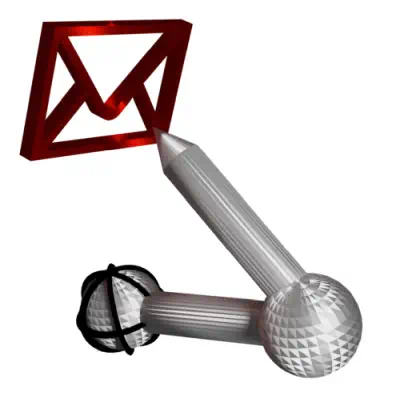AyMINE – Technical documentation
Modules
Integration with ERP Abra Gen
 Task, project & quality management
Task, project & quality management
Manager approval with the task report
Why some data can't be deleted
GDPR and record of qualifications
Qualification of user or contact
Right to Manage Qualifications
Adminitration of areas, projects, calendars
Failure Analysis for an Individual Property of a Component or Process
FMEA – Probability of Detection
FMEA – Probability of Occurrence
 Task, project & quality management
Task, project & quality management
Administration of the Task Management Module
System rights for the task management module
Improvements and Preventive Measures
Methodology and Quality Management systems
What makes up the methodology / SMJ
Problems, tickets and their management
Collaborative Resolution of Multiple Problems
Customer Service Response Generation
Incident and Quality Issue Management
Objects affected by the problem
Problems, Incidents, Helpdesk Tickets
Return project plan by baseline
Sample tasks and methodologies of the area
Effect of the task on the right to modify the attached object
The person responsible for the task
Working procedure – task definition
Management of responsibilities - RACI Matrix
Objects related to the task pattern
 Contacts and directories module (CRM)
Contacts and directories module (CRM)
Address book list and management
Directory or people and companies
Order overview for customer groups
 Contacts and directories module (CRM)
Contacts and directories module (CRM)
System Permissions and CRM Module Settings
Send bulk messages in compliance with GDPR
How to correctly forget a person's details
Unsubscribe and set preferences
for bulk mail
 Web management and automation
Web management and automation
Receiving a message from the web
Human resources
Personalistics – User Permissions and roles
Human Resources module security
Manage department / division data
Overview of Personnel Information for pracov# Employment Contract
Synchronizing staff and system users
 Products, assets and sales
Products, assets and sales
Creating and processing orders
Manage the Property & Business module
Why are the Quality criteria usefull
Managing Finance
Metrics and Measurements
Work summaries from generated data
Technical Modules
Sabre plugin module
Enterprise Architect connector
Database link to Enterprise Architect database
Enterprise Architect connector
System Modules
 The AyMINE Framework Module
The AyMINE Framework Module
AyMINE — Tips for Mobile Usage
Configure how your system looks and works
Gestures and Keyboard Shortcuts
More about how the system works
Private notes and tags for objects
Overview of Modules and Record Types
 Activity log
Activity log
Activity logs are an important record of how tasks and activities you perform have been handled. Term log is used in order to distinguish them from records (See more about both of them at the end of the section)
An activity is generally anything that happened to an object (e.g. a task) that is worth noting.
The records form evidence for audits and for internal documentation of the progress of activities. Records are created automatically, but you can also create them yourself. Due to their importance for the documentation of progress, it is not possible to delete records.
What records are created for
Records can be created for objects that are being processed. In addition to tasks, these include e.g. requirements (proof of processing), projects ("Daily Log" required by methodologies and regulations), but also other objects.
When records are created
Records are created when the status of an object changes, a decision is made about it, or another important change takes place.
Remember:
- If an important event occurs that does not translate into changes in AyMINE, it is important to note it in a new record. This will put it in your diary for later recall.
- Your internal methodology probably determines what events need to be recorded. Be sure to familiarize yourself with the methodology; AyMINE cannot record all events automatically!
How to edit records
Records that are created automatically cannot be edited.
Records that you have created can only be edited about 1h after creation. Therefore, you do not have to worry about e.g. saving a record in progress while writing. However, you should take into account that you will not be able to edit the record the next day, for example.
The records have a date to which the event refers. You can set the date when you create the record to the date to which the event actually relates. For example, you can record events the next day or later. (In addition to this date, the date the record was created is also stored in the database. This date cannot be modified for any object or record.)
What to do with an incorrect record
You can correct a record shortly after it is created. Later, you can record the correction as another record. (The same logic applies to accounting records, for example.)
Records vs. activity logs
AyMINE enables the creation of logs – formalised documentation of the progress of activities. More about logs here. Logs are automatic and manual; automatic logs are created as activity records – they are automatically created records that contain details of processing so that they also serve as a log.
The records serve as a statement of work
It is possible to fill the time sheet record once with the activity records – technically they are identical objects. In a singe record you created both the work description and the time sheet. The time sheets are described in more detail here.